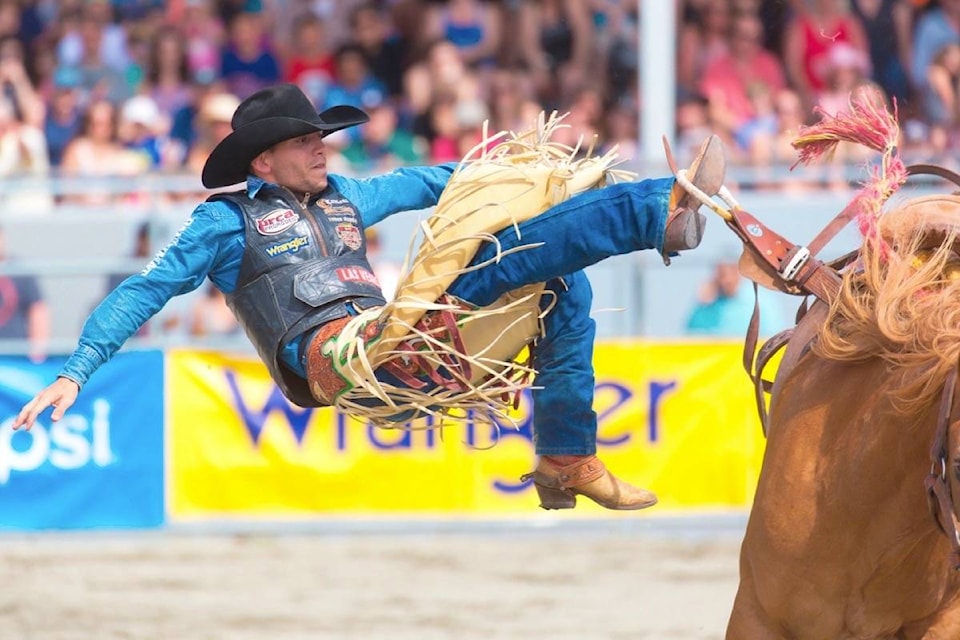Summer weather has arrived early, and it should be a great weekend to enjoy one of Surrey’s oldest and most enduring activities – the Cloverdale Rodeo and Country Fair.
Surrey and White Rock now host many large events each year, such as the Vaisakhi Day parade, the Fusion Festival, White Rock Sea Festival and Canada Day activities.
It wasn’t that long ago when there weren’t nearly as many. The rodeo and fair, which at one time were two separate events, were among the few that attracted a broad spectrum of the community.
See also: Countdown to the 72nd-annual Cloverdale Rodeo and Country Fair
See also: At the Cloverdale Rodeo, clowning around is serious business
The fair goes back to Surrey’s earliest days as a municipality.
Settlers were spread out and didn’t get many chances to connect. Most were farmers, trying to figure out which crops did best in an unfamiliar area.
The annual fair, which started in 1888 near the municipal hall at then-Surrey Centre – the rural community west of Cloverdale – offered a rare chance for people to get together and see how the summer conditions had treated them.
There were many exhibits: animals, produce, baking, canning and sewing. It eventually became one of the biggest fairs in B.C., and held that status for years.
The fair was held in September and was one of the final big events of the summer.
Gradually, it lost its lustre as Surrey became more urban. Newer residents didn’t know the community background, and people who had little direct contact with agriculture didn’t see much need to check out exhibits.
It made it to its 100th year as a stand-alone event, and was later rolled in with the successful Cloverdale Rodeo.
The rodeo was first held at the end of the Second World War. Rodeo is a sport that highlights many of the skills used by cowboys on ranches in Western Canada and the United States.
By the time the Cloverdale Rodeo began, interest was growing and people were anxious for some relaxation after the tense war years.
The Calgary Stampede had a successful history by that time, and the initial organizers saw similar possibilities for rapidly growing Surrey.
See also: Bullfighting is a profession ‘unlike anything else out there’
See also: Voice of the Cloverdale Rodeo puts three decades of know-how behind announcing
It faced challenges in the early years – including the 1948 Fraser River flood – but grew to become Surrey’s first big community event of the spring and summer months. It’s also becoming one of a few events in Surrey to attract visitors from other parts of the Lower Mainland.
One of the first competitors was Will Senger, in bareback bronc riding as a teen. He later began volunteering with the rodeo, and became a legend. He served as rodeo chairman for years and was instrumental in its growth, and attended each year since. He died in October at the age of 85, and will be honoured at Monday’s rodeo performance.
The rodeo has grown to encompass many western and cowboy-themed aspects. It is also a much broader community event. In Cloverdale, there are the bed races on Thursday, a chili cook-off on Friday and the popular parade on Saturday.
The family-oriented fair and rodeo is a great alternative to heading out of town on the long weekend – particularly given high gas prices this year.
Frank Bucholtz writes weekly for the Now-Leader.
